Fitness tracking devices are exploding in popularity.
Nike Fuelband. Fitbit Flex. Jawbone Up. Garmin Vivofit. Striiv Fusion.
The list – and hype – of wearable fitness trackers continues to grow, and the technology has evolved into a popular social trend that is part of many of our daily lives.
They provide insight into our fitness and allow us to analyze personal data, track activity, and monitor progress.
But if you think your fitness band is key to losing weight, dropping your blood pressure or increasing strength?
Not so fast, warns Matthew Bice. “A Nike Fuelband or Fitbit might not be all that you hope it will be.”
Activity trackers have generated overwhelming interest from people who are both starting to become physically active and those maintaining current physically active lifestyles.
But do they increase physical activity motivation for adults? Bice’s 2015 study “Technology and Physical Activity Motivation,” set out to answer that question.
His research, which focused on 42 participants using the Nike Fuelband SE for eight weeks, showed that those using fitness monitors experienced a significant increase in motivation.
Bice’s study suggests that electronic activity tracking devices can be valuable tools for behavior change and help efforts to increase adult physical activity levels.
“People are attracted to the immediate feedback, and that can be a great motivation. However, many people buy Fitbits and Fuelbands with the misconception that they will make them more active. As popular as they are, they just don’t help people become more active long term,” Bice says of his research findings.
The success of fitness tracking technology depends on where a person is in terms of behavior change.
“If you’re ready to change or need to change, they’re much more effective,” explains Bice. If you’re a fitness newbie looking for extra motivation to get started and stick to your goals, the bands proved to be a valuable tool. They make physical activity less of a chore.
What about those already living physically active lifestyles with set exercise regimens? That group isn’t too excited about, or motivated by, health and fitness trackers, according to Bice’s research.
“If you’re already active, using devices to track areas such as calories and steps isn’t of much interest. If you are at a high level of fitness, activity trackers don’t give a lot of meaningful information in terms of something that motivates you.”
An assistant professor of kinesiology and sport sciences, Bice came to UNK in 2013. He teaches classes on physical activity and fitness testing, physiology of exercise and research methods.
He is quick to point out that his research supplements his teaching.
“I talk about my research in class every day. All of my students know exactly what my research is about. My research supports my teaching. What I enjoy about UNK is that it’s a university that gives professors room to be very good at both. I love that flexibility.
“My passion is teaching, being influential and helping students meet their goals. I want that to be very clear. But research gives professors such as myself credibility in their scholarly work.”
Bice’s scholarly research examines physical activity as a behavior and lifestyle.
Many people think they are more active than in all actuality, says Bice, and “people often ignore the consequences of not partaking of physical activity until problems arise.”
His focus is on contributing factors of physical activity and what motivates children and adults to take part in physical activity.
“The benefits of partaking in physical activity far outweigh the consequences, and my professional career is focused on further identifying factors contributing to adulthood physical activity behaviors.”
Bice has churned out research articles at a loyal pace. He published six articles in 2014 and another three in 2015. Two additional manuscripts have been accepted for publication, and an additional three currently are in review.
As a young researcher with tenure in mind, Bice knows it’s important to dedicate himself to research and writing.
“Professors are scholars. If we don’t have scholarly output, we’re not doing our jobs,” he insists. “I feel strongly about that. And that fits my personality because I love writing.”
Bice’s enthusiasm for writing shows. He sets aside two to three hours to write each day, usually early in the morning from his campus office in Cushing Coliseum after taking 6 a.m. runs with his wife, Jena, and golden retriever DJ.
He often reminds himself of regular advice from his dad, John: Never let anyone outwork you.
“I try to be the first one here and the last one here. I really enjoy closing the office door, writing and challenging myself.”
For Bice, patience and persistence is important when trying to get published.
“There is always a home for a research study, and sometimes it takes time to find that home,” he says. “Just because one journal doesn’t think your work is good doesn’t mean it’s not meaningful.”
It just means it might not be the right home for that audience, says Bice.
“It took me some time to understand that not getting accepted right away shouldn’t get in the way of progress.”
At age 30, Bice recognizes he’s early in his research career and has a lot to prove – to seasoned researchers and colleagues, and the journals and publications he wants to accept his work.
“I know I have to earn my stripes, and that motivates me to be good at what I do,” he said. “I firmly believe in learning from others who have been there before me. I put a lot of trust in my mentors, and I’m not afraid to lean on them and learn from them.”
Bice’s most noted research project – “Adults’ Motivation for Physical Activity: Differentiating Motives for Exercise, Sport and Recreation” – published in 2014 and is at the heart of his studies.
The study examined 443 participants and compared their motivations to partake in physical activity in areas of exercise, sport or recreation.
Exercise was defined as fitness components that improve and promote muscular strength and endurance such as running, aerobics, water aerobics and weight training. Recreation included leisure activities such as hiking, gardening, fishing, backpacking and others people take part in for personal enjoyment and leisure.
Sport was defined as organized, competitive activities – individual or team – that involved physical exertion such as tennis, basketball, softball, football, golf, racquetball and soccer.
“We found that motivations vary by the type of physical activity. However, those motivated to participate in recreational activities and exercise as their primary source of physical activity do so for similar motivational purposes,” says Bice.
The study found the majority of participants, 61 percent, reported exercise as their primary form of physical activity, compared to 18 percent for recreation and 12 percent for sport.
The top three motives for exercise and recreation participants were strength and endurance, weight management, and stress management. Participants whose primary choice of physical activity was sport identified competition and enjoyment as their top motives.
“What drives people? That was the main question I had entering this study,” says Bice. “We are all motivated differently, but there were two take homes from this. One is that people understand the importance of physical activity and are motivated by health benefits. The other is that stress reduction stood out clearly as a No. 1 motivation for people. That’s in line with the fast-paced world and society we live in.”
Another arm of Bice’s research focuses on high school sports and shows that individuals who participated in competitive high school sports have higher physical activity levels as adults than those who did not.
The study – “Influence Of High School Sport Participation On Adult Physical Activity” – examined 1,350 adults in Illinois who were surveyed assessing current physical activity levels.
Bice found that participating in high school sports doesn’t necessarily predict future physical activity trends.
“The study showed that physical activity derived from high school sports participation can transition into adulthood,” says Bice. “High school sports aids in an active lifestyle, but it wasn’t noticeably different from those who participate in recreational activities.”
Bice has been involved in athletics his entire life. He grew up playing baseball and soccer in his hometown of Odessa, Texas, and was a standout soccer player in college at The University of Texas of the Permian Basin.
Sports played a big role in leading him to a career in education.
“That absolutely drew me to this career. I was immersed in an environment that was conducive to physical activity, and that carried over into adulthood,” he recalls. “It’s interesting to look back on that now and recognize the link between my youth and current research interests.”
Bice first became interested in research his junior year of college, which also is when he locked in on a career in higher education.
He credits James Eldridge, chair and graduate coordinator of kinesiology at UTPB, for shaping his research interests.
“Dr. Eldridge was so influential. He is a big-time researcher, and he got me excited about research,” Bice says. “I remember testing rats, drawing blood and just becoming so immersed in those labs.”
Eldridge provided the mentorship, and friendship, Bice needed to become a successful researcher.
“I can’t tell you how many times I walked into his office to talk about sports, school, life or whatever was on my mind. He honestly cared about me,” Bice says. “I drove him nuts, and he probably wanted to throw me through the wall sometimes, but he was always there for me.”
Student research is what reinforced Bice’s decision to teach.
“It became very clear that this is what I was meant to do. Research challenged me. I was eager enough to ask questions that come with research and probably arrogant enough to think I could solve the toughest issues. I still enjoy that challenge of ‘can I do it?’”
PERSONAL MOTIVATION
While attaining tenure and reaching the level of full professor is important as Bice advances in his career, it’s not his primary motivation.
“Tenure scares me because you can’t get complacent. Academia is constantly evolving and progressing, and I need to consistently produce in and out of the classroom.
“My motivation is 100 percent family. I want to make my family proud. I want my parents, wife, and sisters Jenifer and Jordan to say ‘well done.’ That’s probably not a driving force for many researchers, and it probably seems a bit out of place, but it is a very powerful motivator for me. It is important because they’ve always supported me and never let me down.”
The other driving force behind Bice’s research is simple.
“I care about people. I hope I can change lives. I want people to learn something from my research that gives them the skills, knowledge and motivation to move forward.”
Lack of physical activity is a universal public health problem, reminds Bice. Small incremental increases in activity can result in a decreased risk for heart disease, diabetes, osteoporosis, cancer and improve muscle mass.
“Physical activity is cheap. It is a behavior that everybody is in control of, but a lot of people don’t participate because they’re not in control.”
There are physical and psychological barriers, he admits.
“Everyone struggles with being healthy. Ignoring your issues and challenges isn’t the right way to go about things. It’s not easy, but physical activity should be part of a lifestyle. It should be fun. Physical activity is really adult play.”
Bice wants people to know they are not alone when it comes to physical activity and fitness challenges.
“What do I want people to take away from my studies? I think about that all the time and ask myself where my research is going. I hope my research empowers and motivates people. I hope people will use it to be mindful of their own lives, where they are at now and how to face and overcome barriers using something I’ve taught them.”
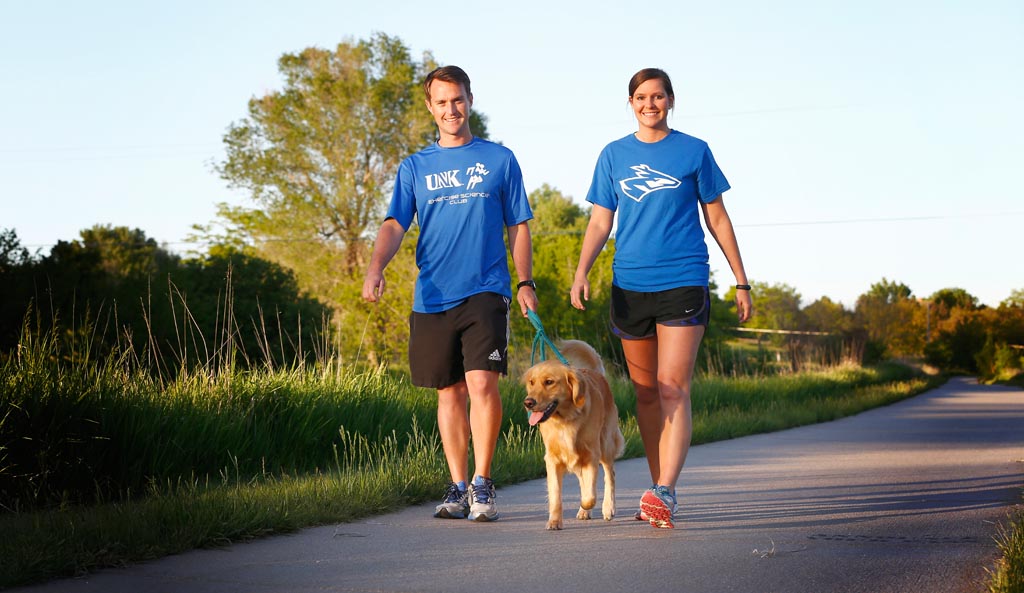
Matthew R. Bice
Title: Assistant professor, Kinesiology and Sport Sciences
College: Education
Education: Bachelor of Science, The University of Texas of the Permian Basin, 2007; Master of Science, The University of Texas of the Permian Basin, 2009; Ph.D., Southern Illinois University – Carbondale, 2013.
Years at UNK: 2
Career: Graduate teaching assistant, Department of Health Education, Southern Illinois University – Carbondale, 2011-13; Graduate Research Assistant, Department of Health Education, Southern Illinois University – Carbondale, 2012-13; Doctoral Research Assistant, Center of Rural Health and Social Services, Southern Illinois University-Carbondale, 2010-12; Graduate Research Assistant, Environmental Health, Southern Illinois University-Carbondale, 2009-10.
Family: Wife, Jena, CPA at McDermott and Miller. Parents, John, auger designer and manufacturer in Odessa, Texas, and mother, Barbara, who works for the Ector County (Texas) Sheriff’s Department. Sisters Jennifer and Jordan.
Hobbies/Interests: Fly fishing, hiking, cycling, golf, coaching soccer
Interesting Fact: Matt graduated in 2003 from Permian High School in Odessa, Texas, which is the school featured in the best-selling book and popular movie “Friday Night Lights,” which documented the winningest high school football team in Texas history.
Honors/Awards: College of Education Outstanding Researcher Award, UNK Interfraternity Council “Faculty of the Month”
Areas of research/specialization: Motivation to partake in physical activity, Influence of technology on physical activity, Influencing factors of continual physical activity, Influencing factors associated with inactivity, Coordinated School Health Programs, Professional Preparation Training – Best practices and Training techniques
Courses taught: Introduction to Physiology of Exercise, Fitness Testing, Research Methods
Recent Published Articles:
- “Adults’ Motivation for Physical Activity: Differentiating Motives for Exercise, Sport and Recreation,” Recreational Sports Journal, 2014.
- “Influence of High School Sport Participation on Adult Physical Activity,” Journal of Sport and Health Research, 2014.
- “Technology and Physical Activity Motivation,” International Journal of Sport and Exercise Psychology, 2015.
- “Electronic Activity-Tracking Devices: Qualitative assessment of device usability after an 8-week intervention,” The Health Educator, 2015.
- “Health Technology Ownership and Use: Implications for Adult Physical Activity,” Journal of Sport and Health Research, planned publication 2016.
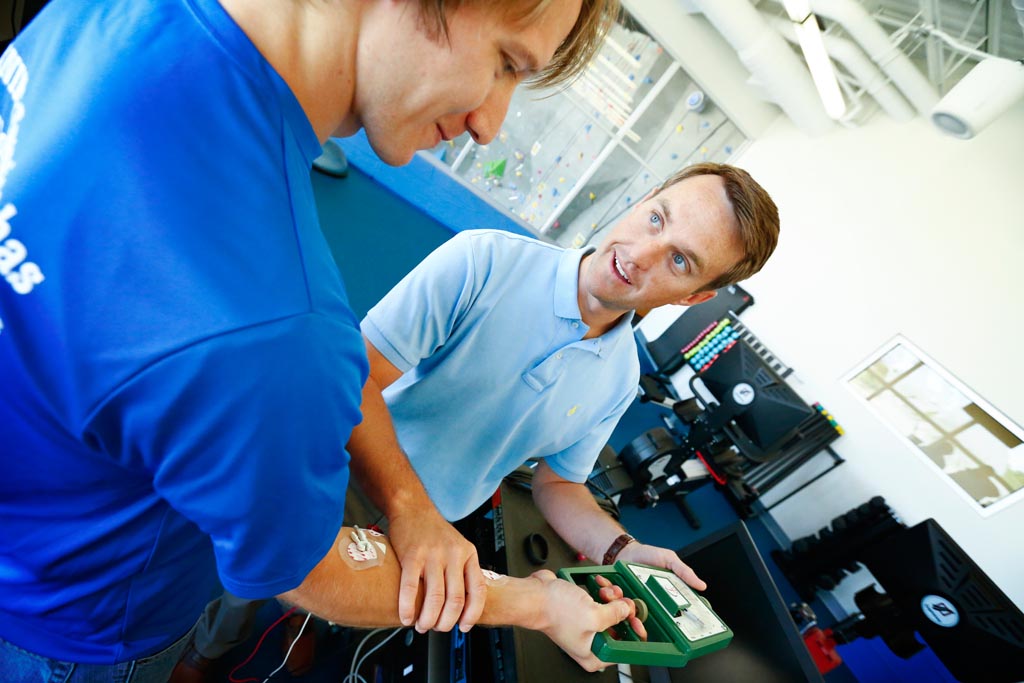
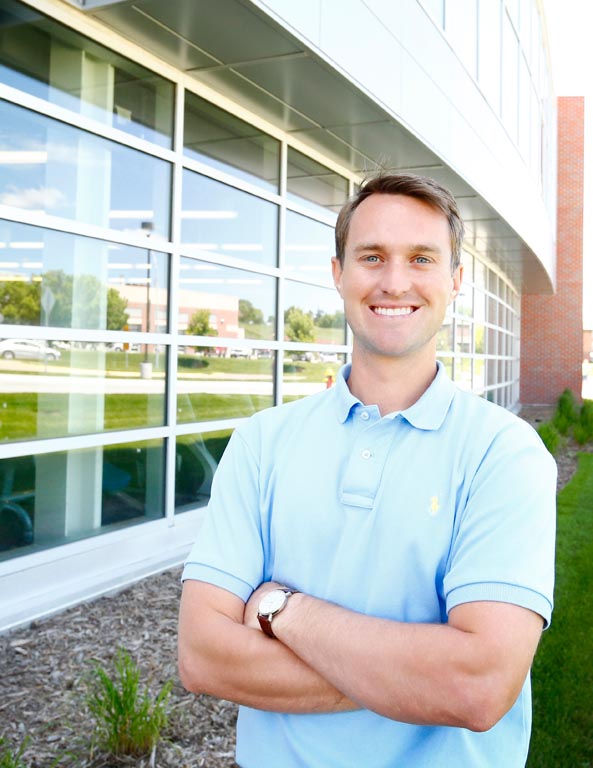
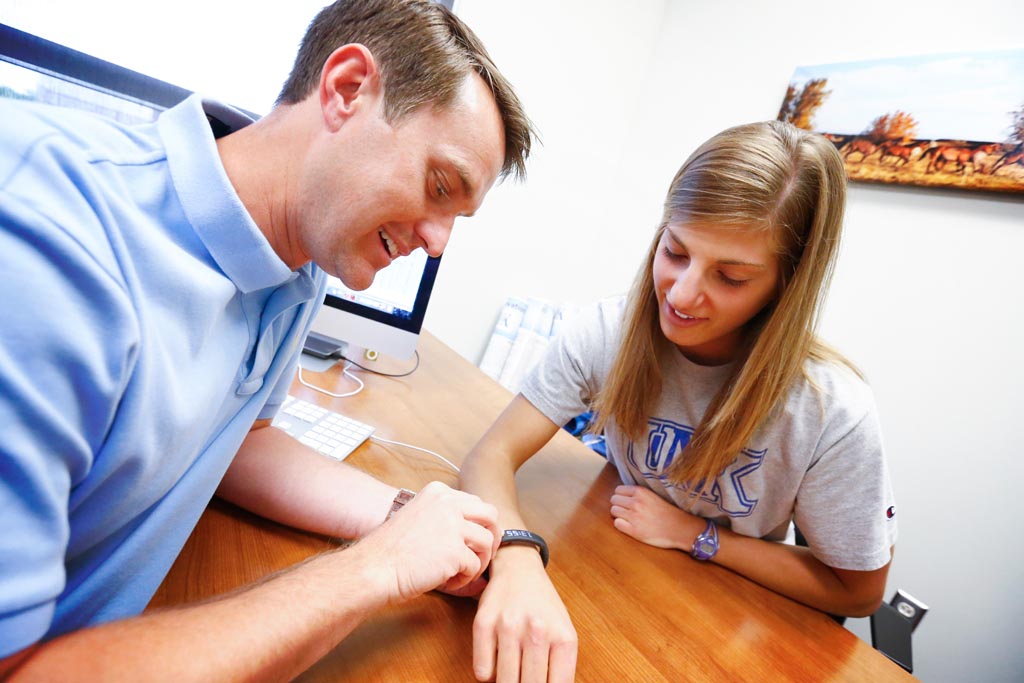
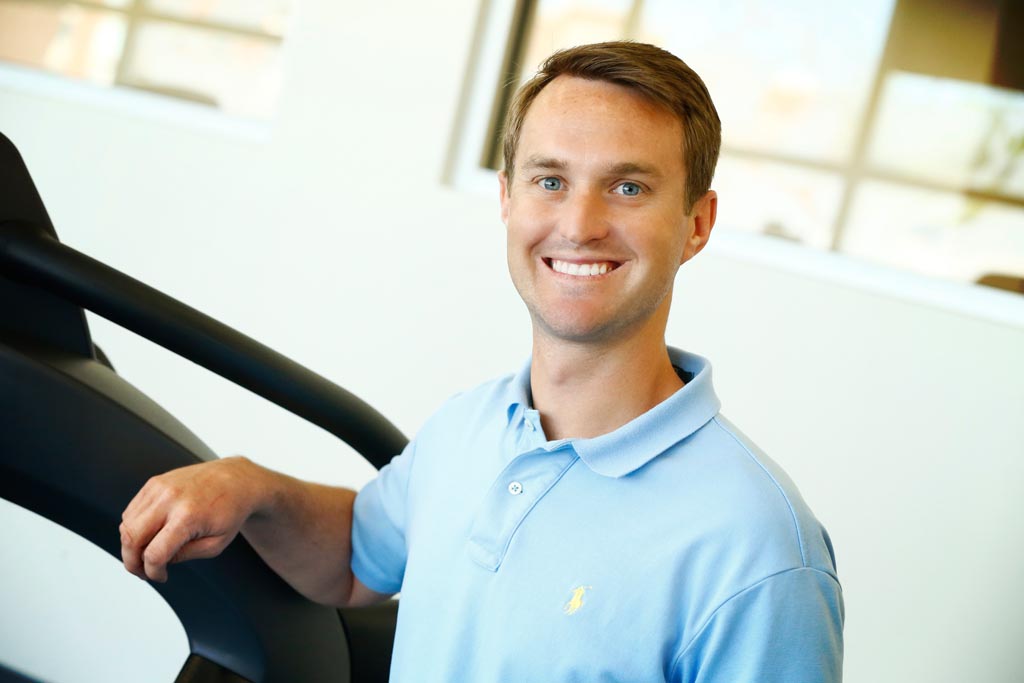
Do you believe that exercise is only beneficial to the human body if it produces eustress, and not distress? If so, I’d like to talk with you about it. SWE.